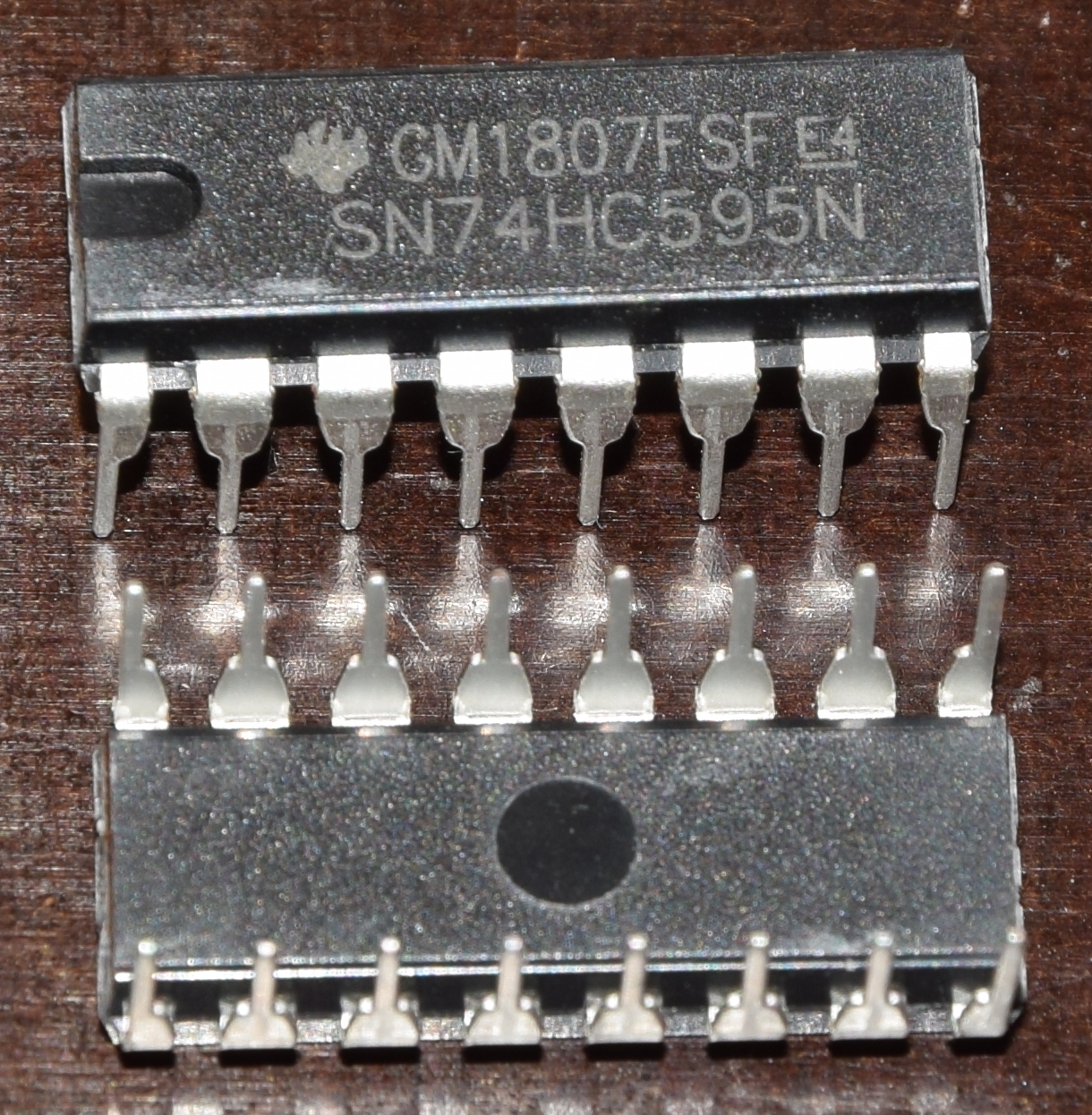I have some 74HC595 devices (exact marking GM1807FSF E4 SN74HC595N). They were supplied in packs of 10 in what appear to be ESD-safe bags.
All the devices I have tried so far (three from one pack and one from another) behave as if the outputs are open-drain and not the expected push-pull configuration.
I have the OE\ pin connected to ground and the SRCLR\ pin connected to Vcc (nominally 5v). The SER, RCLK and SRCLK pins are driven by an Arduino in slow motion (1s pulses!) so I can easily see what's going on.
The shift register appears to be working correctly - I can see data appearing at the QH' pin.
When the latched Q outputs have no load I see no signal with my multimeter. However, if I add a 10k pull-up to the outputs I see the expected signals.
According to the data sheet, the outputs should be able to source enough current to drive low-current LED devices (70mA max for the package).
Is this a faulty batch? I've also seen that there's a 74LS596 device with open-collector outputs, but there doesn't seem to be a 74HC variant of that device, so it can't simply be a case of incorrect marking. Could there be some interference between the internal latch outputs and the OE connections to the output buffers such that when the latched data is high the output is high-impedance?
[Update] After further research, I've discovered other people with the same problem. It appears that these devices are counterfeit - possibly remarked 74LS596 devices. Is it possible to confirm that from the batch number (GM1807FSF E4)?



